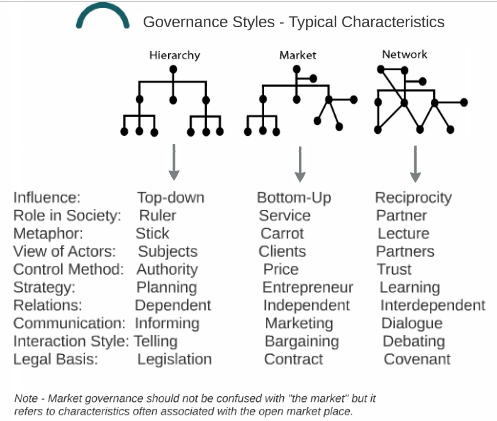Chalkbeat takes a look at De Blasio’s campaign promises on education and how they’ve played out
Overall, seems to me De Blasio & Farina have rolled out some pretty solid stuff when you look at it as a whole, minus the politics. I think the district restructuring is a mixed bag and the top-down management is problematic, but the smooth roll-out of pre-K services, and Single Shepherd and AP and College Access programs will be gamechangers for kids in the long run.
Where we need to keep pushing De Blasio and Farina: autonomy and accountability for school leaders, reducing partisanship over charters and choice, and fighting segregation.
There’s always plenty to criticize in any Mayor or Chancellor’s reign. I’ve gotten into frequent arguments with my colleagues about Bloomberg and Klein’s administration because I’m unwilling to paint their leadership and policies with one broad stroke of good/bad. Let’s talk about what is working and criticize what’s not.
Mayor Bill de Blasio has made many education promises. Here’s what he’s delivered so far — and what he hasn’t, Chalkbeat NY
Speaking of critique–here’s the problem with the way we talk about improvement in ed
David Cantor at the 74 has insightful analysis of NY politics and how it’s affecting the Mayoral Control debate–and the way we talk about education.
“Preschools don’t yield the hard, annual data markers that reputations and public support are built on. The measurable impact of the program likely won’t reveal itself to researchers until this mayor is no longer in office.”
He’s right. This is one of the fundamental problems with how we look at education. If we are only focused on the short-term, then all we will get is short-term effects, which may ultimately be detrimental.
Here’s a case in point. Due to the outsized focus on test scores in elementary schools, many principals place their most effective teachers in the 3rd grade or higher, because that’s the grades that are tested. But a far better strategy, in the long-term, would be to place your hard-hitters in the earliest grades, because that investment will better build the foundations for learning that many kids desperately need.
Similarly, principals talk about focusing all their attention and resources on their “pushables”–the kids who are at the upper borders of a 1 or 2 or 3 on the state test. So what’s going to happen to the students that aren’t so labeled? And what’s going to happen to the coherence in your instruction across your school?
Interestingly, some reform pundit focus in response to Cantor’s cogent article is to highlight his criticism of De Blasio’s renewal school bloatware and his antipathy to the media. But here’s what Cantor says right after that:
There may be something more: apathy. Not his; ours. Fixing schools is difficult work; it’s slow; you lose people’s attention. “People are more concerned about the subways,” said Weisberg.
Holding attention is essential to warding off politicians and being able to do “the hard work that has to happen inside schools,” as Henig says.”
Indeed. The real work of education is incremental, it’s hard, and it won’t grab many headlines.
Analysis: The Fierce Fight Over Mayoral Control Reflects De Blasio’s Weakness on Education, the 74
Speaking of surface level judgments . . . college teachers grade attractive students higher
This result, they add, was “driven mainly by courses taught by male instructors.”
ATTRACTIVE STUDENTS GET HIGHER GRADES, Pacific Standard
All charters can’t be painted with the same brush–just like public schools
Sara Mead argues that “it’s hard to make any single statement that accurately characterizes the national charter school landscape as a whole.”
Indeed. It’s hard to make any single statement that accurately characterizes schools period. This is one of the core issues about how we talk about schools, whether public, charter, or private.
Look Beyond the Acela Corridor, US News
Lessons on desegregation from Dallas
1) Open up admissions (a lottery system, rather than selective admissions)
2) Set aside a certain percentage for low-income students
Dallas Schools, Long Segregated, Charge Forward on Diversity, NY Times
A new study says that diverse classrooms increase student well-being
In the more diverse schools, “kids have more opportunity to have cross-race friendships and then they become protective,” Graham said. “So if you’re in a diverse school and you’ve made friends with people from different racial and ethnic groups then they help protect you, they help introduce you to kids in their ethnic, racial group, there’s more opportunities to find your niche and fit in.”
New research: student well-being higher in diverse schools, KPCC
EdBuild releases a report on the secession of white parents from school districts that deepens segregation
“Alabama makes it particularly easy for small towns to secede from a larger school district, but 30 states have processes codified in state law that allow for secession, some more permissive than others. Procedures range from only a majority vote in a small, breakaway neighborhood in some states to a multistep process involving a state agency or legislative approval in others.”
Fractured: The Breakdown of America’s School Districts, EdBuild
Privatizing (aka “optimizing”) public services
White House spokesman Sean Spicer said the administration was focusing on technology this week. He said there was “a lot of room for optimization in the federal government.”
What does “optimizing” our public institutions and services mean?
“Cook, the Apple CEO, requested that computer coding be taught in every public school. Microsoft CEO Satya Nadella said workers need more skills for a technology-based economy. Amazon founder Jeff Bezos encouraged the government to use commercial technology to save money and develop artificial intelligence to improve government services.
Venture capitalist John Doerr asked for the government to open up its databases to private firms, saying it would transform health care.”
In other words, use public institutions to serve private interests. Hmm. What does serving public interests mean again now?
Tech CEOs visit White House to talk modernizing government, AP
The ecosystem metaphor is used to argue for an ed reform focus on two-parent families
“The education reform community has a unique responsibility as keepers of perhaps the remaining civic institution—public schools—that interacts with almost every child for prolonged periods almost every week (or at least the thirty-six weeks of the school year). That is why two-generation solutions such as a parent-home-visiting program or the Success Sequence should be explored as part of a core curriculum, given the data that show it’s nearly impossible for a poor person to remain poor if that person makes a series of life choices—finish high school, secure a job, and get married before having a child, in that order.”
If not us, who will make humans human? If not now, a new generation of fragile families looms., Flypaper
Chester Finn slams book promoting free-for-all marketplace from charter school advocates
Finn uses some choice words against a recent book from charter school advocates that promotes reduced accountability to increase parental choice:
This is idiocy. It’s also entirely unrealistic in the ESSA era. It arises from the view—long since dismissed by every respectable economist—that education is a private good and the public has no interest in an educated citizenry. Once you conclude that education is also a public good—one whose results bear powerfully on our prosperity, our safety, our culture, our governance, and our civic life—you have to recognize that voters and taxpayers have a compelling interest in whether kids are learning what they should, at least in schools that call themselves “public.”
I wish more folks understood that education is a public good.
New book from charter school advocates offers lots of bad advice, Flypaper




